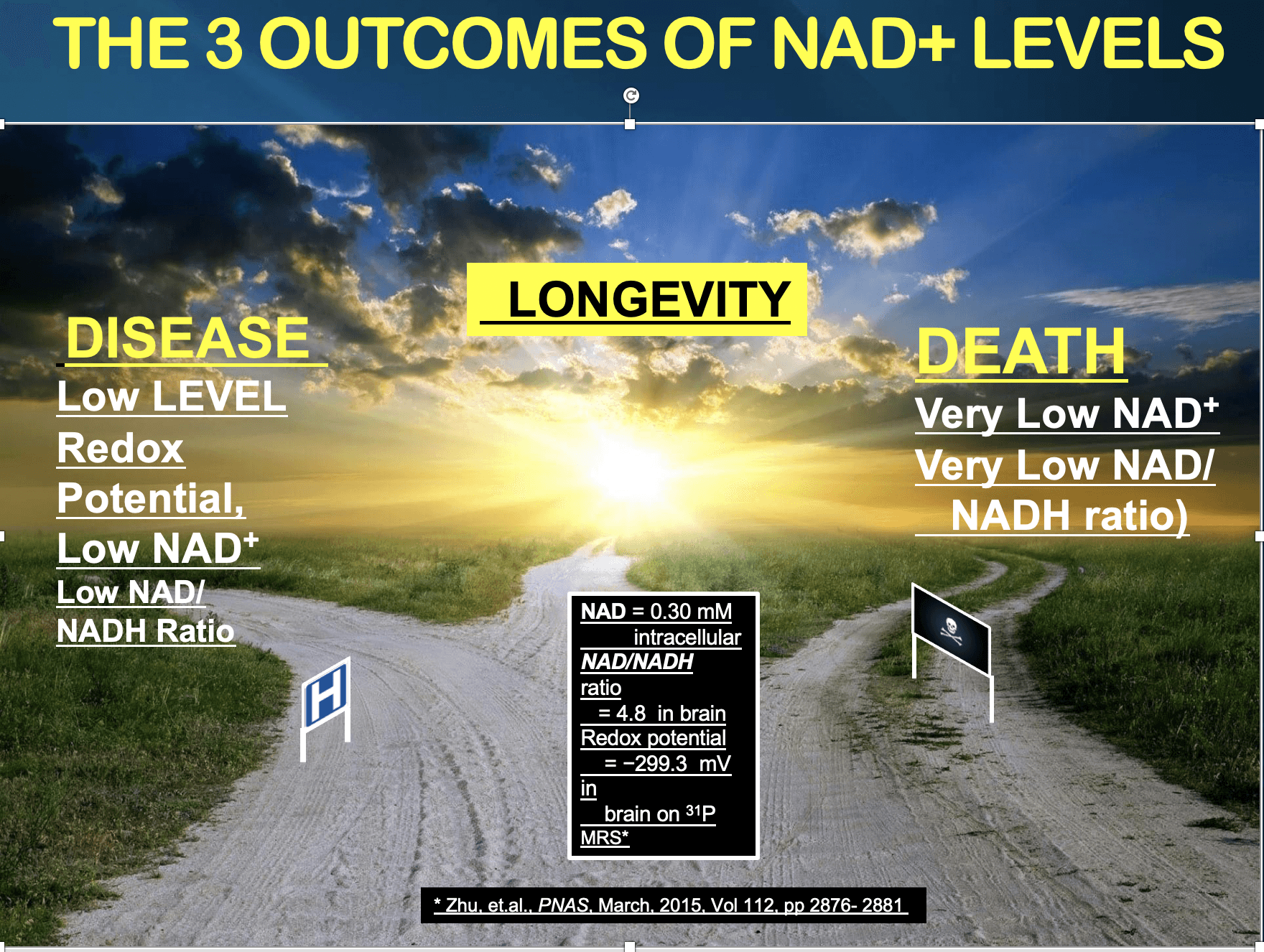
NAD stands for Nicotinamide Adenine Dinucleotide. It is an essential coenzyme that you can’t live without. The above diagram is an excellent synopsis of what the ramifications are to having low levels. If you ask me are we trying to scare you about low levels the answer is a resounding YES. Low levels will result in death and unfortunately a not a healthy life on the way to one’s demise. One significant aspect of NAD is the effect it has upon a certain group of proteins/genes called the Sirtuin proteins. The Sirtuins are a family of proteins that play a role in aging by regulating cellular health. They're responsible for critical biological functions like DNA expression and other aspects of aging. However, sirtuins can only function in the presence of NAD+, nicotinamide adenine dinucleotide, a coenzyme found in all living cells.
NAD is an essential building block during energy production. The energy in this case is ATP. We lose up to 50% of our NAD levels between the ages of 40 and 60.
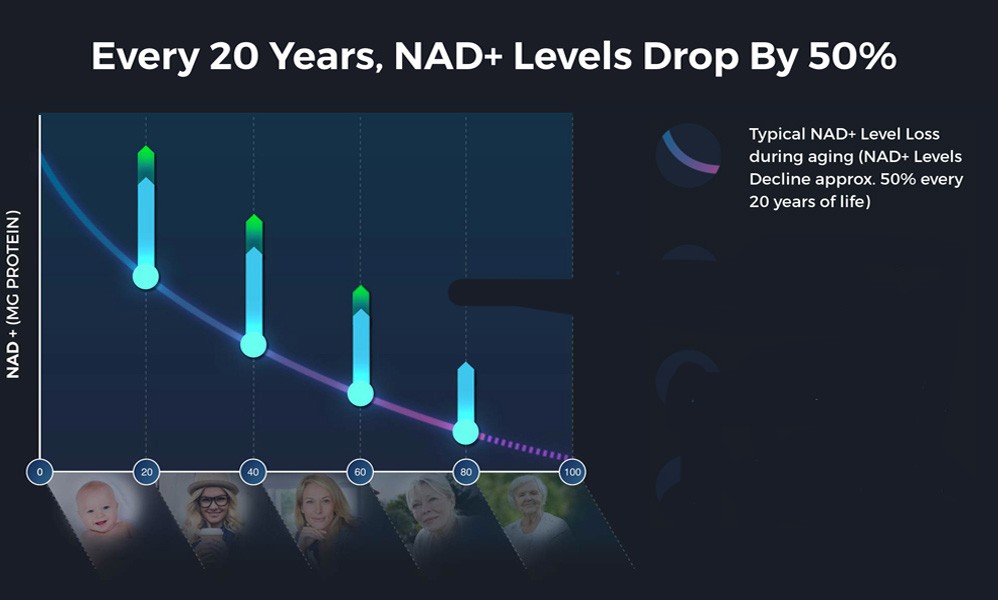
It would seem simple enough to just replace the levels to keep things working at an appropriate level. Just exactly what other aspects does NAD seem to affect in the body? One answer is that it effects the mitochondria. The mitochondria are the power houses of the cell. Consider the mitochondria as batteries for the cells. This diagram shows this concept of the cell battery.
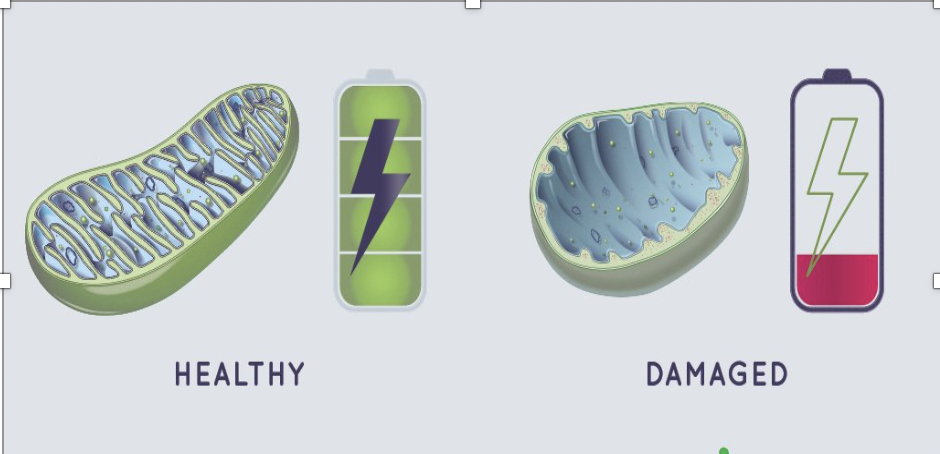
Ultimately, the decline in mitochondrial function causes us to age. A prominent theory of aging holds that decaying of mitochondria is a key driver of aging. Recently (Oct 2019), researchers at Yale Univ. proposed that a metabolic dysfunction of the mitochondria as responsible for Alzheimer’s disease. There are now two competing hypotheses are currently proposed to explain the cause of Alzheimer’s: the first is focused on the accumulation of amyloid-beta protein in the brain as the primary cause; while a second and more recent hypothesis proposes that metabolic dysfunction, specifically a dysfunction of the mitochondria, is responsible. This speaks volumes about the importance of healthy mitochondria.
NAD+ deficiencies and subsequent mitochondrial problems are thought to lead to a multitude of problems stemming from heart disease to various neurological conditions. We can see that when the “batteries” become run down bad things start happening. We go from healthy to chronic illness and cancers!
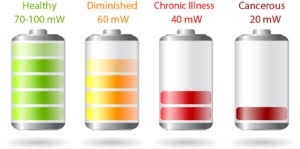
It seems that the tissues that have the most mitochondria such as the heart and brain are most prone to degenerative conditions. Much of the pioneering work concerning NAD+ comes from the research of David Sinclair of Harvard. Dr. Sinclair first shed light on the compound called Resveratrol. It was thought that Resveratrol stimulated the Sirtuin genes. It was discovered that these genes were turned on by exercise and some other entities that have scientific background of slowing down aging, namely starvation, calorie restriction etc. It is felt that Resveratrol mimics starvation and exercise. It appears now that another compound called PTEROSTILBENE which is found in blueberries and grapes may have a better effect than Resveratrol because it is more bioavailable. Resveratrol and Pterostilbene are important for daily supplement intake.
In 2013, Sinclair further reported scientific studies that demonstrated NAD fuels the activity of this same group of proteins as Resveratrol, namely the sirtuin proteins/genes including SIRT 1 and 3. NAD has two general sets of reactions in the human body. The first is that it functions by turning nutrients into energy as a key player in metabolism. The second aspect is that NAD works as a helper molecule for proteins that regulate many biological activities. When it functions as a helper molecule it is called a Coenzyme. Without Coenzymes little would happen and we would essentially die. Here is a diagram of the Sirtuin family.

As can be seen there are seven members of the Sirtuin family. Although the field of Sirtuin research has gone through intensive controversies, an increasing number of recent studies have put those controversies to rest and fully established the significance of Sirtuins as an aging/longevity regulator.
Sirtuins are a fascinating family of enzyme/proteins/genes. Sirtuins have been called the guardians of the genome. They are instrumental in regulating cellular health and ultimately aging. We can see that some of the Sirtuins are found in the mitochondria while others are found in the nucleus. While a third group is found in the cytoplasm of the cell. It is the communication of these various Sirtuins with each other that control the health, numbers and function of the mitochondria. Remember that the mitochondria have a downstream effect on most cellular functions. An emerging consensus from recent studies is that sirtuins may act as metabolic sensors, using intracellular metabolites such as NAD to modulate mitochondrial function to match nutrient supply. The more NAD there is in cells, the more Sirt genes do beneficial things. There are studies that show the SIRT1 protein induces the formation of new mitochondria. NAD can also activate another sirtuin, SIRT3, which is thought to keep mitochondria running smoothly.
It is now clear that sirtuins are involved in the regulation of many fundamental biological processes throughout the body. Sirtuins have evolved to respond to the availability of NAD which is now considered an essential element of cellular metabolism and DNA damage repair. The Sirtuin proteins are related to many of the different aging pathways in the body. If we would have to pick one aging pathway as the most important we would say it is the Sirtuin pathway.
In addition to maintaining the health and numbers of the mitochondria another essential role of the sirtuins is that they remove acetyl groups from other proteins. The acetyl group is found at the end of various proteins. This process of removal of this group is called deacetylation. When the acetyl group is removed, it may allow the protein to become activated and have an effect on numerous other pathways in the body. This process is called transcription. What is really happening is that certain genes are being turned back on. As we age these genes become “turned off” while the Sirtuins seem to have an effect on many different pathways of aging by turning back on certain genes.
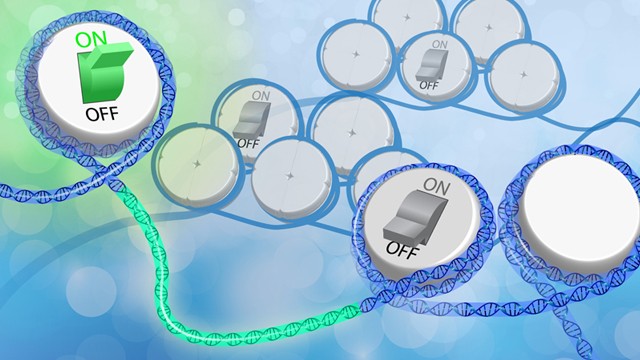
EPIGENETICS
This is one of the newest concepts in aging or shall we say anti-aging. This is an exciting new field called Epigenetics. Epigenetics, as a simplified definition, is the study of biological mechanisms that will switch genes on and off. Dr. Sinclair and his research lab at Harvard are convinced that changes in gene expression in response to DNA damage and lack of Sirtuin input may be a chief cause of aging. He is a strong believer in restoring the health of the mitochondria. Recently (Oct 2019), researchers at Yale Univ. proposed that a metabolic dysfunction of the mitochondria as responsible for Alzheimer’s disease. There are now two competing hypotheses are currently proposed to explain the cause of Alzheimer’s: the first is focused on the accumulation of amyloid-beta protein in the brain as the primary cause; while a second and more recent hypothesis proposes that metabolic dysfunction, specifically a dysfunction of the mitochondria, is responsible. Furthermore, is felt that epigenetics is at play here.
Another aspect of NAD is its responsibility for DNA repair. In regard to DNA repair, NAD is broken down into two component parts, one of which (nicotinamide) gets recycled, while the other (ADP-ribose) meets up with a protein to repair the cell’s DNA. This research formed the foundation of the field of PARPs, or poly (ADP-ribose) polymerases, a group of proteins that rely on NAD to function and regulate DNA maintenance, among other biological functions. Remember as we age the amount of DNA damage is ever increasing. DNA damage will cause more genes to turn off or on. Without NAD, the DNA damage continues to accumulate causing more and more problems such as cancers and other degenerative conditions. We should also keep in mind that PARPs are very large consumers of NAD. This is one of the reasons why we become deficient in NAD.
Thus, we can see that NAD has two huge effects. The first is that it has a direct effect on the mitochondria, the cell’s battery. It supplies power to the cell which in this case is called ATP. Secondly, NAD is an essential Co-enzyme in a wide variety of biological processes. The bottom line is if we are deficient in the enzymes or the ATP many bad things begin happening. Unfortunately, our NAD levels significantly decline as we age.
The next question to ask is how to supply NAD to the body? We are not able to give the body NAD directly. Typically, the most common form of an NAD supplement given to the body is Nicotinamide Riboside which is often called NR for short. Nicotinamide Riboside is a form of Vitamin B. There are other compounds that can contribute to the formation of NAD. NR is one of a few variations of B3; others include Nicotinic acid (also called niacin) and Nicotinamide mononucleotide. These other forms of NAD precursors are not as efficient in producing NAD as NR is.
However, we must realize that the best way to increase NAD levels is by providing it to the body directly by either by an intravenous route or by some other method which gets it directly into the blood stream.
We have found that the intravenous route is the quickest and most efficient method of increasing the cellular NAD levels. One must realize that when given intravenously NAD must be given slowly to avoid some NAD side effects. These side effects may be a nuisance but they are not serious. We are now looking into other methods of increasing NAD levels. One intriguing method involves injecting large dosages of NAD into the scalp with various micro-needling injection techniques. This is a very promising technique that will dramatically cut down the time required to deliver a dose of NAD to the body. We suspect this may be the method of the future in delivering NAD. This is a technique we are actively assessing. Depending upon the condition being treated, the intravenous dose of NAD will vary. The more serious problems will require higher and more frequent doses. Once adequate levels are reached it is imperative to continue dosing on oral supplementation of NAD.
Not wanting to rest on the status quo we have looked into other methods that will increase NAD cell delivery. One aspect that is intimately tied in with NAD is a gene called the NQO1 gene. Another name for this gene is the “longevity gene”. NQO1 regulates aging by altering the NAD/NADH ratio in cells. NQO1 does this by oxidizing NADH to NAD. In other words, the NADH gives up an electron and gets converted to NAD. NQO1 is the gene that codes for the protein “NADH-quinone oxidoreductase 1”. This enzyme will deliver the electron to the NAD. Not only is the NAD content in the nucleus important for delaying or preventing aging, the redox ratio of NAD/NADH is also very important for delaying delaying/preventing aging independently of the total NAD found in the cell. So now we see there are intricacies in the NAD science. It is not just the NAD content in the cells but the ratios of NAD/NADH. There is very strong evidence that the NAD/NADH ratio is extremely important for anti-aging purposes.
When considering the NQO1 gene we are just discovering its importance. It has many far-reaching effects. It appears that the NQO1-dependent pathway is the most important pathway for regulating P-53 levels within the cell. The P-53 gene is also called the tumor suppressor gene. Its job is to patrol the cells and analyze them. It will help repair DNA damage or if the cell is damaged badly it will cause the cell to go on to death. It acts as a guardian of the genome. As its name suggests, P-53 is called the tumor suppressor gene. This gene is very important in cancer suppression.
Obviously if we have a compound that will increase the effectiveness of NQO1 that is very important on a few different levels. We have a supplement that does this. This compound is Beta-lapachone, a compound found in the bark of the South American Lapacho tree. The name for this is Pau D'Arco. We provide this medication to our patients to enhance the NAD/NADH ratio and as a side effect stimulate the NQO-1 gene. We typically encourage the use of this medication for 15 days on than stop for 5 days than continue for another 15 days and repeat the cycle until the bottle is finished. A patient will take one tablet twice a day.
Another recommendation we have with NAD supplementation is the use of Quercetin. Quercetin is a plant pigment (flavonoid) supplement. It is found in many plants and foods, such as red wine, onions, green tea, apples, berries, Ginkgo biloba, St. John's wort, American elder, and others. In this case we are using Quercetin for a few different reasons. First it seems to have an effect on certain pathways (Nrf2) that ultimately seem to stimulate the longevity gene NQO1. Remember NQO1 effects the NAD/NADH ratio in a positive manner so typically we are going to increase the overall effects of NAD. As a side note the Nrf2 pathway is a pathway that turns on your own body’s mechanism to remediate oxidative stress. One can consider it as the body’s thermostat for oxidative stress. Getting back to Quercetin, it is also used as what we call a Senolytic agent which is something that kills a certain type of cell called a Senescent cell. This brings us to an important concept in NAD therapy. Unfortunately, this is a concept the most clinics utilizing NAD therapy do not address.
Senescent cells start as healthy cells that experience stress which causes them to enter a state known as cellular senescence. In this state, cells stop dividing and profoundly alter their metabolism, appearance, and interactions with their environment. The subcellular damage itself does not directly cause the visible signs of aging, but rather, as the damage accumulates and reaches a critical mass, cells cease to proliferate and acquire the deleterious “senescence-associated secretory phenotype” (fancy way of saying the cells have changed character and altered the compounds they produce) which then leads to the consequences of tissue breakdown to create an aged cell. Thus, senescence is a precondition for tissue aging. One can think of Senescent cells as zombies which ultimately infect normal cells. As we age these cells become more and more numerous. It is now felt that eliminating them can increase our overall health. These cells are thought to be responsible for a host of diseases of aging from Osteoporosis to cancer. The following diagram explains the ramifications of cell senescence.
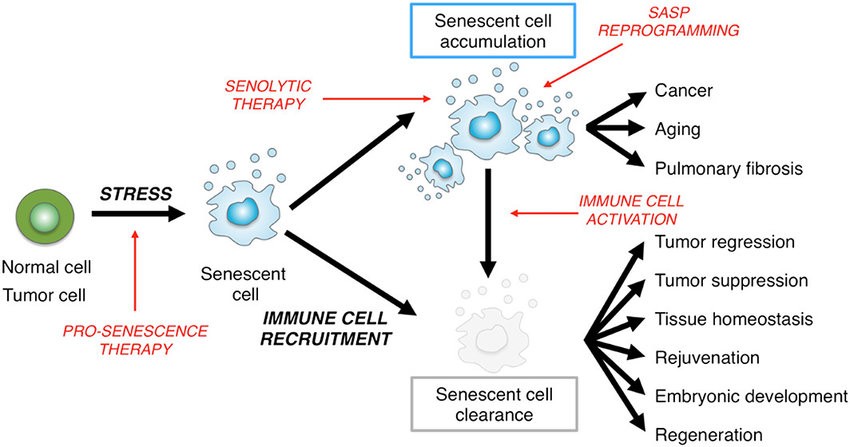
What we need to avoid the NAD treatments having a positive effect on the Senescent cells. We do not want to make the Senescent cells more vigorous and subsequently cause many bad things. Instead we want to try to eliminate many of these cells. We have addressed this for some time. The Quercetin is a potent senolytic agent (a compound which kills the senescent cells) while at the same time boosting NAD levels. To take the senolytic agents to the next level we sometimes will add a course of Dasatinib with the Quercetin. This same technique has been utilized by various University studies in their protocols concerning senescent cells. We take Senescent cells very seriously knowing the damage they are capable of doing. These cells are significant contributors toward aging.
It is now clear that NAD decline is one of the fundamental molecular events that regulate the process of aging. NAD in the body is in a very delicate balance between consuming enzymes which are fixing DNA damage, between helping mitochondria produce ATP, and allowing the Sirtuins to do their work on various aging pathways in the body while having a profound effect on the Epigenetics of genes. Any deviation from this delicate balance side can cause significant derailment of the system. The good news is that one cannot overdose on NAD. We now have increasing bodies of evidence supporting that interventions using intravenous NAD followed by oral intermediates, such as NMN and NR, can bolster the system by restoring the available NAD and mitigate physiological decline associated with aging. We are now at the point where we can effectively raise NAD levels for the prevention and treatment of aging and aging-related diseases.
Remember we are always pushing the envelope on treatments.
